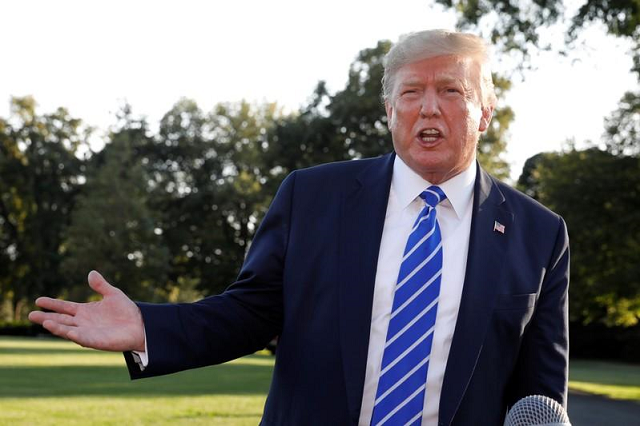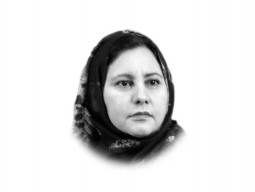
The Afghan developments were lately quite looped. Taliban being unrelenting through their attacks in Kabul (September 5th car bombing and other attacks) fighting in Kunduz and Puli Khumri, and an offensive in the Farah province. The US and Afghan forces were equally active, with Mark Pompeo accepting killing more than 1,000 Taliban over the past 10 days. All this while talking peace in Doha. The Afghan government under President Ashraf Ghani was feeling left out as the perception gaining traction was that the US intended to cut loose and leave. On Saturday, Mark Esper, the US Secretary of Defense, during a press conference in Paris, had to reassure the beleaguered Afghan government that the US was not looking for a quick exit and would only accept “a good deal, a good enough deal that at least guaranteed the security of our countries…” His remarks were greeted warmly in Kabul. Reportedly, the US Secretary of State, Mike Pompeo, was getting weary of the Taliban attacks and sought to distance himself from the deal by refusing to sign it on behalf of the US.
In another development, the foreign ministers of China, Pakistan, and Afghanistan — after their meeting on Saturday in Islamabad — emphasised support for an “Afghan-led and Afghan-owned” reconciliation process. The three countries emphasised a “comprehensive” peace deal, condemning the Taliban-assisted attacks and hoped for direct negotiations between the Taliban and the Afghan government. They hoped the intra-Afghan dialogue, sooner rather than later, would end the violence completely.
The cancellation or postponement of the talks can be attributed to the lack of a unified approach from the beginning. On the US side, the Department of State and Defense differed on the assessment of the Islamic State and Al Qaeda and the consequent presence of US military and intelligence resources. The White House staff, despite opposition by the CIA Director, Gina Haspel, was pushing for arming the Afghan militias through the CIA’s paramilitary division, to maintain leverage if things did not go as expected after the agreement. Afghan officials had misgivings about the Taliban. For them, the agreement did not guarantee continued presence of US counterterrorism forces, the survival of the pro-US Afghan government, and even an end to the fighting. An Afghan official privy to the briefings with Khalilzad was quoted as saying, “No one speaks with certainty. None. It is all based on hope.” He said that intercepted communications “show that they [the Taliban] think they have fooled the US”. Trust was a huge deficit and in the absence of trust, implementation is always problematic.
Knowing the Afghan sociology and psyche, one was never hopeful, as it is not easy to size up a tribal mindset with 21st-century diplomacy, augmented by the external urgency of elections, somewhere, sometime. It was argued in this space that the Taliban would never budge on their core demands of a complete withdrawal of the Occupation Forces before a ceasefire, and their stated refusal to talk to the “puppet regime” in Kabul. Hence, the unraveling did not occur because of the reported killing of a US soldier — too significant to the US, but insignificant as just another war casualty. The agreement fell apart as there was no consensus on the core issues at multiple levels. There seems to be no urgency on part of the Taliban, who understand the US compulsion of the 2020 presidential elections and the deadline given to Khalilzad before the (September 28th) Afghan elections. The Taliban have time.
Moreover, any agreement on the core issues would have created fissures in the Taliban Movement. It would have caused defections of the rank and file to the Islamic State (whose origin, arrival and sponsorship in Afghanistan is a matter of controversy and debate) and discredited the Doha office in the eyes of the Taliban rank and file on the battlefield. An absolute ceasefire before the complete withdrawal of foreign forces is perceived to be very risky by the Taliban; as a largely volunteer combat force once demobilised is very hard to reassemble. A complete ceasefire was also against maintaining the combat tempo and relevance besides enhanced leverage at the negotiating table. Talking to the Afghan government has been an anathema to the Taliban rank and file, as it undermines the very basis of jihad. At the anthropological level, the Taliban response springs from the Pashtun notion of Badal (revenge). Inability to exact revenge for Taliban casualties caused by the US and Afghan forces, irrespective of time, resources and effort, imposes a perceptibly weaker social position and is best avoided. Pashtun sociology monopolises means of violence, hence the Taliban’s perceived opposition to the consequent partnership in the power-sharing arrangements with the erstwhile foes, during the implementation phase of the agreement later. The midlevel and ranking Taliban field commanders of today are more radicalised than the erstwhile mujahideen of the Soviet era. Jihad against the Soviet Union was stirred when the youthful cadre of the Peoples Democratic Party of Afghanistan (PDPA) — from the late 1970s onwards — attempted to change the social status-quo. Contrarily, the Taliban cadre of today is more inspired from the Islamic ideology and is affected by events in Iraq, Syria, Libya, and Kashmir, having a relatively pan-Islamic predilection.
So crystal-gazing Afghanistan, one sees the continuation of violence. Policy planners in Pakistan need to brace up for a violent neighbourhood. We must also be savvy to protect our legitimate interests in Afghanistan by carefully riding the Afghan government and Chinese bandwagon. In the emergent settlement, as and when, Pakistan should not be standing in the wrong corner. The US will leave sooner or later, and Afghanistan will belong to those who fought tooth and nail for its liberation. Likewise, while India must be relaxed that Kashmir will have no visitations from Afghanistan in the near future, we need to nudge our Afghan policy back to the Soviet times and protect our legitimate national interests. If anyone thinks the scuttled agreement was meant for peace, they are being two-faced. As of now, a face-saving exit seems to be closed.
Afghan baqi… kuhsar baqi…
(Afghan remaining…their mountains standing).
Published in The Express Tribune, September 10th, 2019.
Like Opinion & Editorial on Facebook, follow @ETOpEd on Twitter to receive all updates on all our daily pieces.














COMMENTS
Comments are moderated and generally will be posted if they are on-topic and not abusive.
For more information, please see our Comments FAQ